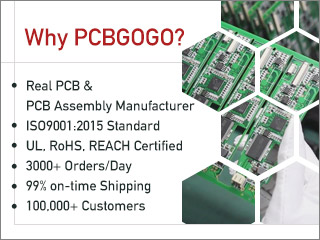Instructions & Tips for Soldering & Desoldering Circuit Boards
A printed circuit board, or PCB, is populated with electronic components that are bonded with the copper pads on the board. The process of bonding is called soldering, while desoldering is done to remove a component from a PCB. The most common method of soldering and desoldering involves heating up the solder flux at a high temperature using a soldering iron. To desolder a through-hole component, first place the PCB on a flat and dry surface with the component side facing down. Next, turn on the soldering iron and set it at a temperature of 375 degrees Celsius. Place the copper braid on the first soldered pin and gently press it with the tip of the soldering iron. Within a few seconds, the solder will melt and the molten flux will be absorbed by the copper braid. As soon as you notice that all solder flux has been absorbed by the braid, retract the braid and the soldering-iron tip. Cut off the front portion of the copper braid that has absorbed the solder flux with a wire cutter. Repeat this desoldering process for all the component pins. Once finished, turn the board over and pull the component out of the board with tweezers. Soldering and Desoldering of SMD Components To desolder an SMD component, first place the board on a flat and dry surface with the component side facing up. Turn the soldering iron on and set it at a temperature of 375 degrees Celsius. Place a copper braid on top of the first soldered pad and gently press it with the tip of the soldering iron. The solder will melt and be absorbed by the copper braid. As soon as you notice that all the solder has been absorbed by the braid, retract the braid and the soldering-iron tip. Cut off the front part of the solder braid that has absorbed the solder flux with a wire cutter. Repeat the desoldering process for all the component terminals and, when finished, lift the component off of the board with tweezers. Soldering Tips Desoldering Tips
Soldering and Desoldering of Through-Hole Components
Through-hole components are easier to solder because their pads are relatively bigger than the surface mount devices, or SMDs. To solder such a component, first insert its pins through its corresponding holes on the board and then slightly bend them so that the component does not fall off when board is turned over. Next, turn the soldering iron on and set it to a temperature of about 375 degrees Celsius. Turn the board over with the component side facing down and place it on a flat and dry surface. Place the soldering wire at the interface of a component pin and its pad and touch it with the soldering-iron tip. The solder will melt and cover the pad. Retract the soldering wire and soldering-iron tip. Repeat this process for all the component pins. Once finished, cut off the excess component pins with a wire cutter.
Place the PCB on a flat and dry surface with the component side facing up. Turn the soldering iron on and set it at a temperature of 375 degrees Celsius. Identify the pads on the board where the component is to be soldered. Melt a small amount of solder on any one of these pads. This can be done by holding the soldering wire on the pad and touching it with the soldering iron tip. As soon as the solder melts and fills the pad, retract the solder wire and the tip. Next, hold the SMD component to be soldered with tweezers and place it on the board so that its terminals get aligned with the corresponding pads on the board. Note that the component will be slightly tilted because one of the pads has solder on it. Gently press the component from the top with the tip of the tweezers and touch the soldered pad with the tip of the soldering iron. The solder will melt and the component's terminal will sink to the bottom of the board. Retract the soldering-iron tip immediately. To solder the next pin, place the solder wire on the interface of the pin and the pad and touch it with the soldering-iron tip. Retract the wire and tip as soon as the solder melts and fills the pad. Repeat this process for all the remaining component pins.
Even though modern electronic components are designed to withstand high temperatures, it is not advisable to keep the heated soldering-iron tip on its pins for more than a few seconds. With practice, a component terminal can be soldered in less than three seconds. Using too little solder may produce high impedance connection and introduce signal reflections. On the other hand, too much flux may flow to nearby terminals and pads, causing electrical shorts. The right amount of solder is the one that fills the pad but does not overflow it. It takes some skill to get the right amount of flux on the pads, and therefore it is advisable to practice the soldering on a spare board before working on the actual board. Soldering-iron tips come in different sizes and shapes. The proper choice depends on the size of the pad and terminal to be soldered. In general, thin and angled tips work well for SMD components and thick and straight tips work well for through-hole components. Always work in well-ventilated areas while soldering, as the solder flux fumes may cause breathing problems and eye irritation.
Desoldering requires melting solder flux for a time longer than what is required for soldering because it takes some time for the copper braid to absorb the molten flux. However, it is advisable to keep this time as short as possible, since excessive heat flowing into the component through its terminals may damage it permanently. Generally, a terminal can be desoldered in less than five seconds, but it takes some practice to achieve this timing. Using a thick soldering-iron tip speeds up the process. Practice desoldering components on a spare board before working on an actual board. As with soldering, desoldering should also be done in well-ventilated areas to avoid harm from the solder flux fumes.


